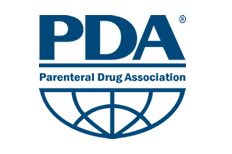LATEX ALLERGY - FACTS YOU NEED TO KNOW.
| Cleanroom Supplies Blogger

What Is Latex Allergy?
A latex allergy is an immune system reaction to proteins in natural rubber latex, a product made from rubber tree fluids. Natural rubber latex is obtained from the tropical tree Hevea brasiliensis, and many of the proteins it contains are found in other plants.
Skin problems and the Health & Safety risks associated with latex rubber contact have been known for many years. It is often seen in association with the wearing of protective latex rubber gloves and can progress to a low grade eczema with itching, redness and scaling. However, symptons can result in life threatening shock.
There have been an increasing number of immediate allergic reactions occurring very soon after contact with latex.
Allergy to the chemicals used to process latex rubber produces a skin reaction similar to eczema, known as allergic contact dermatitis. This is seen less commonly than irritant contact dermatitis and can produce blistering and weeping as well as redness and itching. It progresses to dryness and scaling as it heals. It is caused by a Type 4 delayed immunological reaction. This type of reaction is not life threatening although it is extremely itchy and uncomfortable.
Type 1 reaction is similar to that which occurs in hay fever, allergic asthma and peanut allergy. It can vary in severity from a mild nettle rash on contact, to severe anaphylactic shock with respiratory symptoms and collapse. It is potentially fatal but deaths are fortunately very uncommon. Unlike the Type 4 reaction, it is not delayed and can occur within minutes of contact.
Symptoms
In sensitive individuals, symptoms are variable and usually occur after skin or mucus membrane contact with rubber. They can also occur after inhalation. Severe itching and rash can occur, usually within minutes of contact. This may progress to sneezing, wheezing, dizziness and/or light headedness and collapse. Deaths have been recorded but are very rare.
Inhalation from particles in the air, such as latex adsorbed onto rubber glove powder, may produce respiratory symptoms, although progression to more serious symptoms may occur.
The potential for progression to a severe reaction should always be kept in mind even if initially a reaction appears mild.
Contact of natural rubber latex protein with mucus membranes is particularly hazardous since a greater amount of latex protein is absorbed into the system.
This is of more significance when medical examination of body cavities is carried out during dental examination and treatment, and during surgical operations when the personnel involved are wearing rubber gloves.
Who is at risk?
Certain groups of people are more likely to develop allergy to natural rubber latex than others.
These groups are:
- People predisposed to allergy, usually in the form of eczema, asthma, hayfever and other food allergies.
- Patient with hand eczema.
- Workers in the rubber industry and health care workers.
Certain clothing products contain latex, so there use should be avoided. These include:
- Disposable latex gloves – particularly powdered
- Clothing containing elasticated wrist, elasticated ankle or elasticated hoods
- Condoms
How to Avoid Contact
Once the diagnosis of allergy to natural rubber latex is established, then avoidance is the best way to prevent reactions occurring. The potential for rubber latex to elicit an allergic reaction does decay with time. The most potent articles are those most recently produced, particularly if they are powdered.
Alternatives are available for many rubber products:
- There are several types of synthetic materials used for protective gloves; PVC gloves, Nitrile Gloves are widely available and popular alternative. Contact Us for further advice
- Check with the manufacturer of disposable protective clothing that the elastic used is Latex Free.
- Check before buying any article which could be rubber whether it contains rubber latex. This is particularly important for articles which will be in contact with your body
In Summary
Latex Allergy should not be taken lightly as the complications can be life threatening. Thankfully this is rare. However, be aware, and ensure your employer is aware of the risks. Continue to take all the necessary precautions to avoid rubber latex if you are at risk.
Cleanroom Supplies Optimum Protection disposable protective clothing products are Latex Free and we stock a range of latex free Powder Free Nitrile Disposable Gloves.












